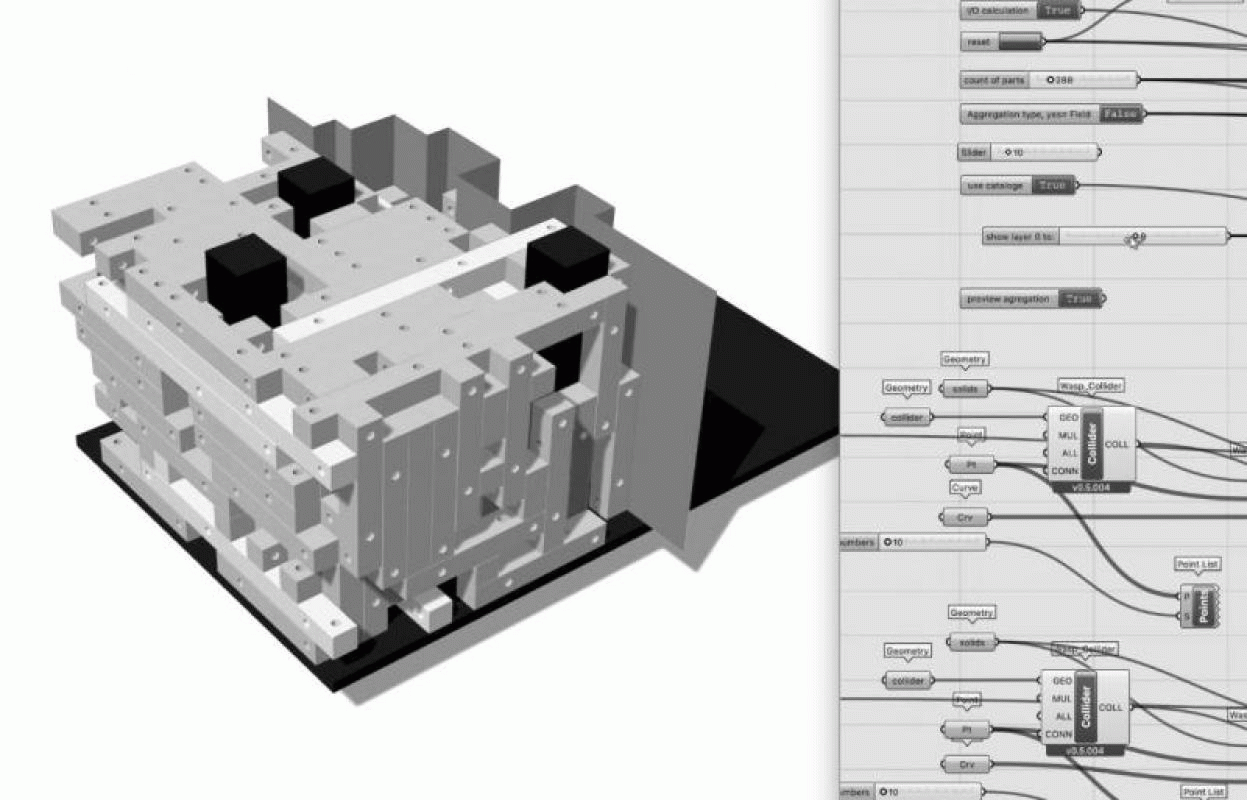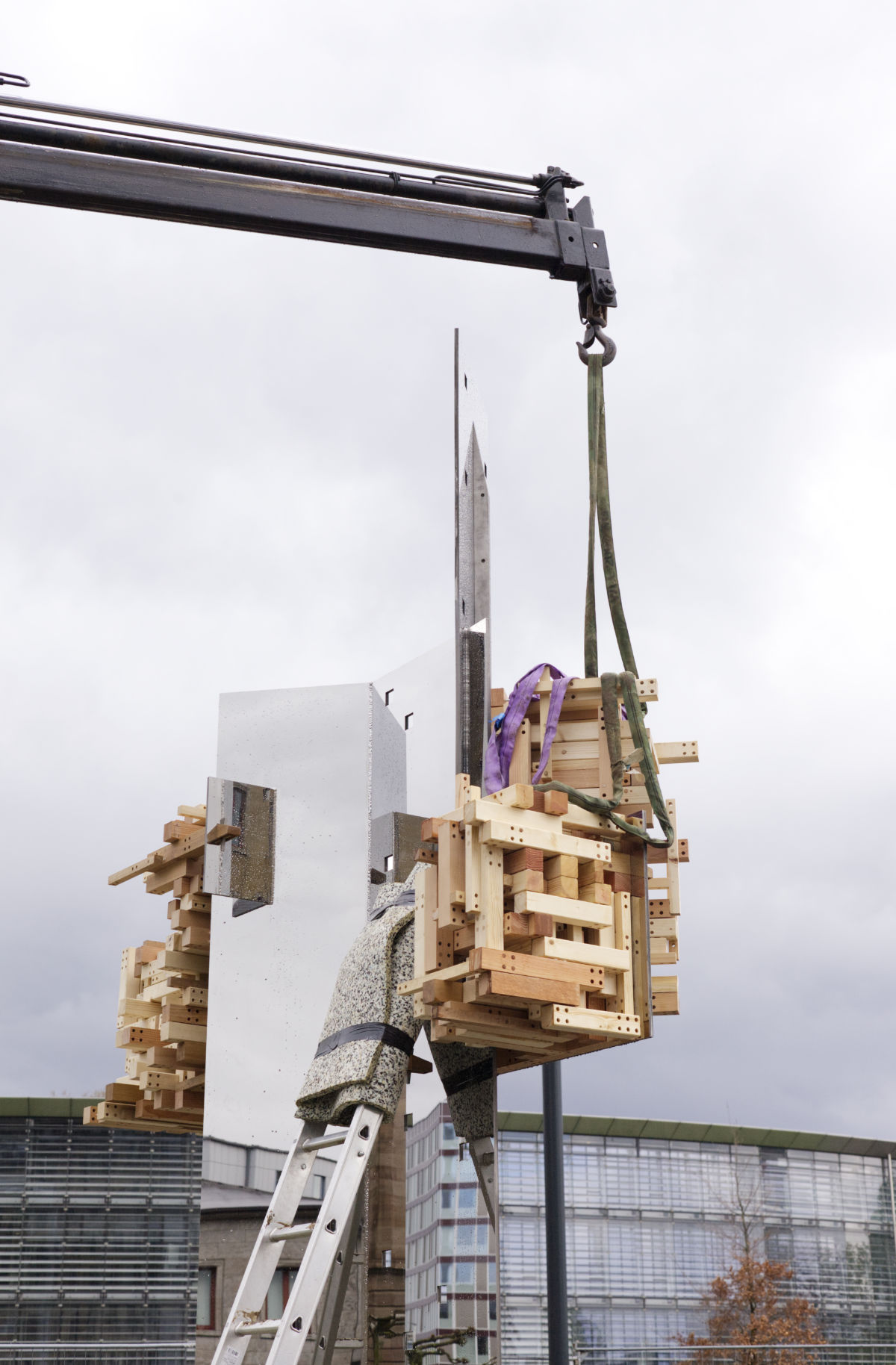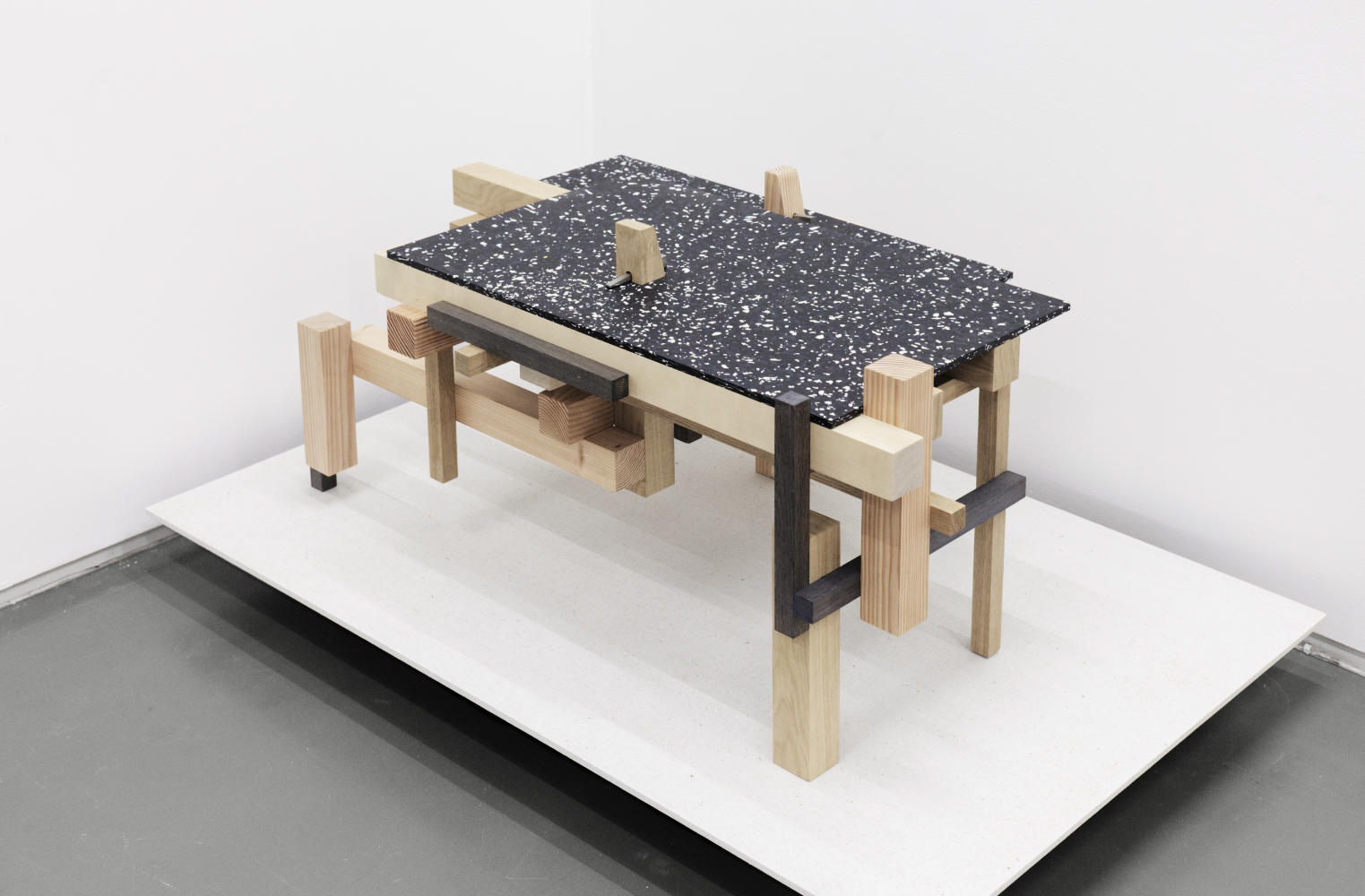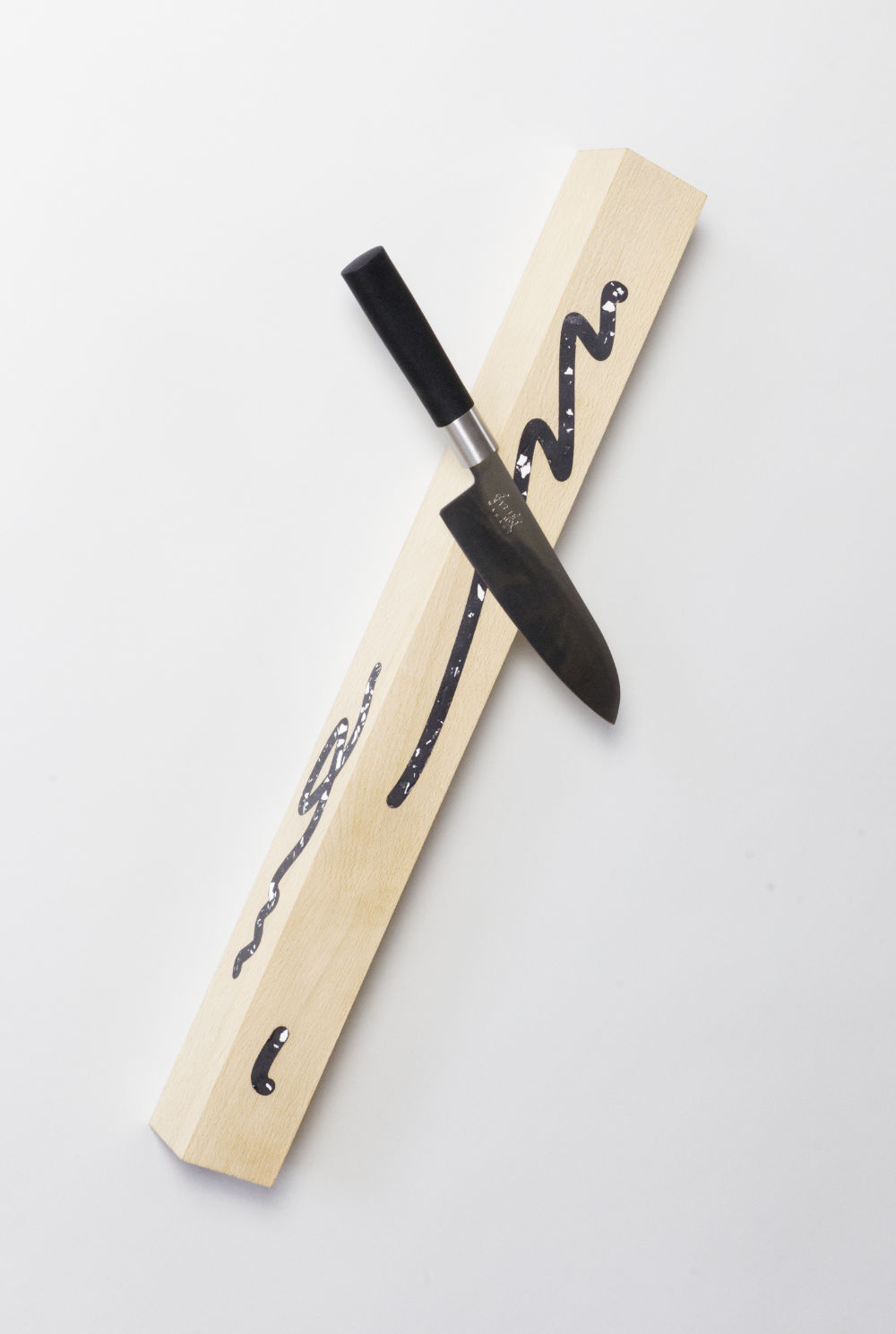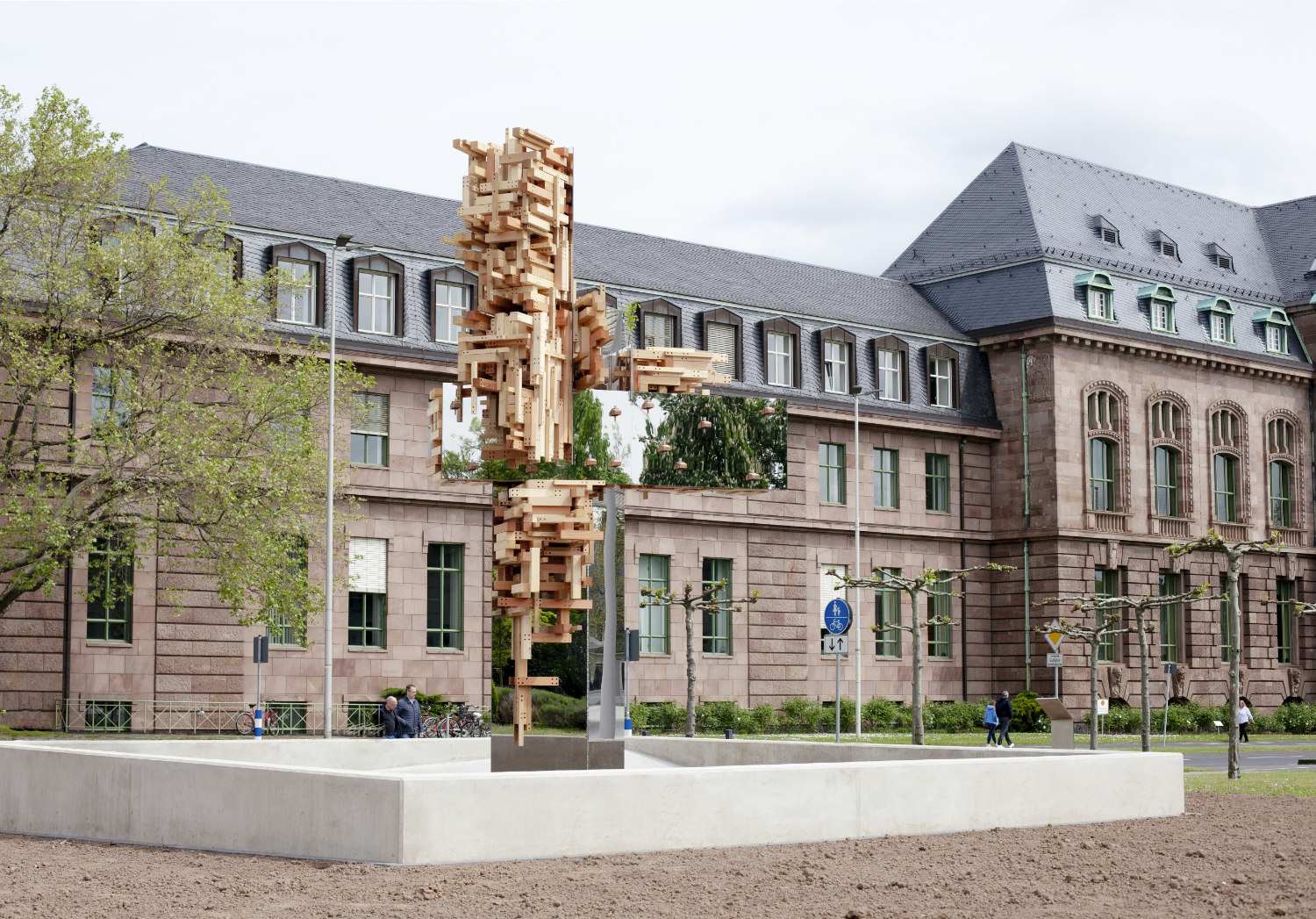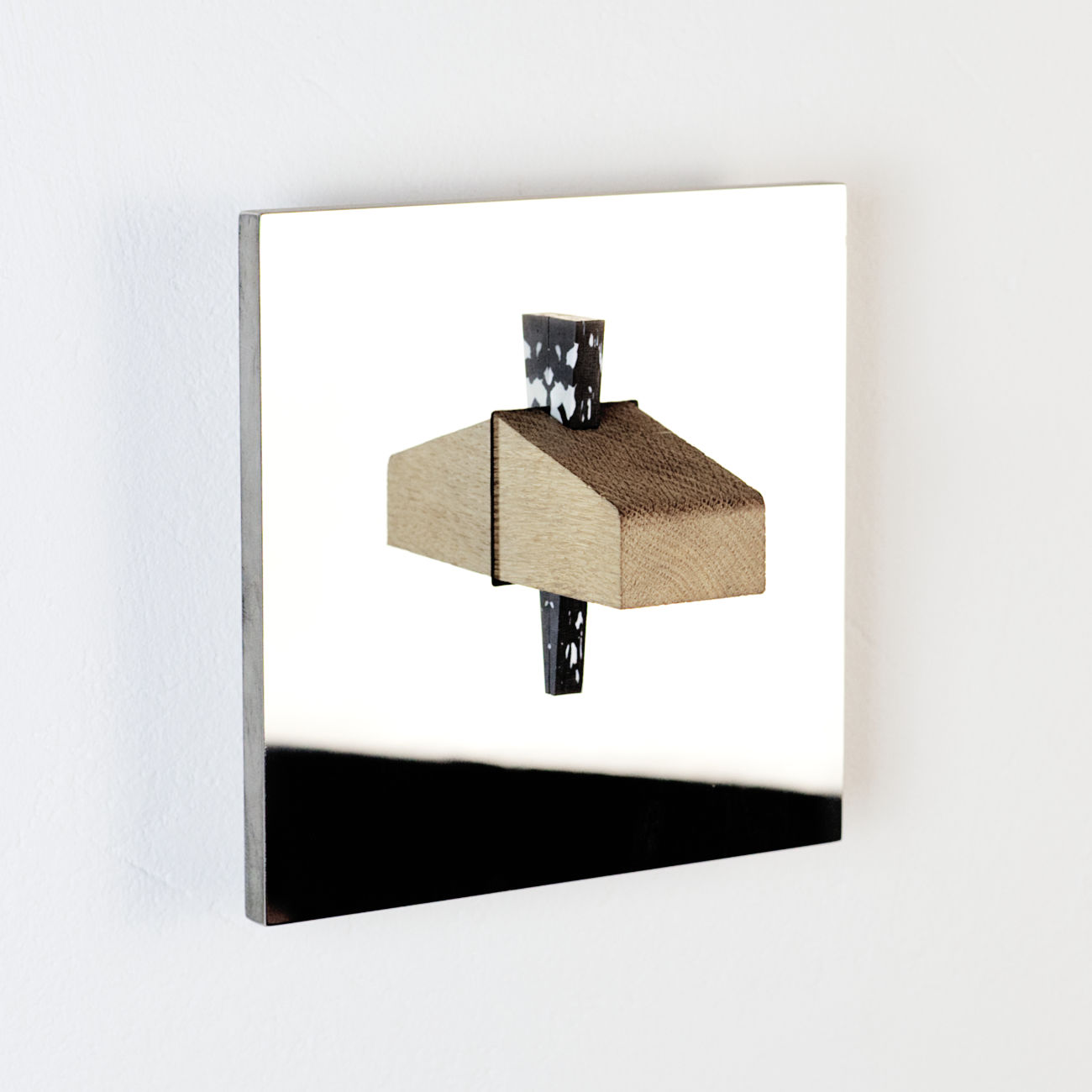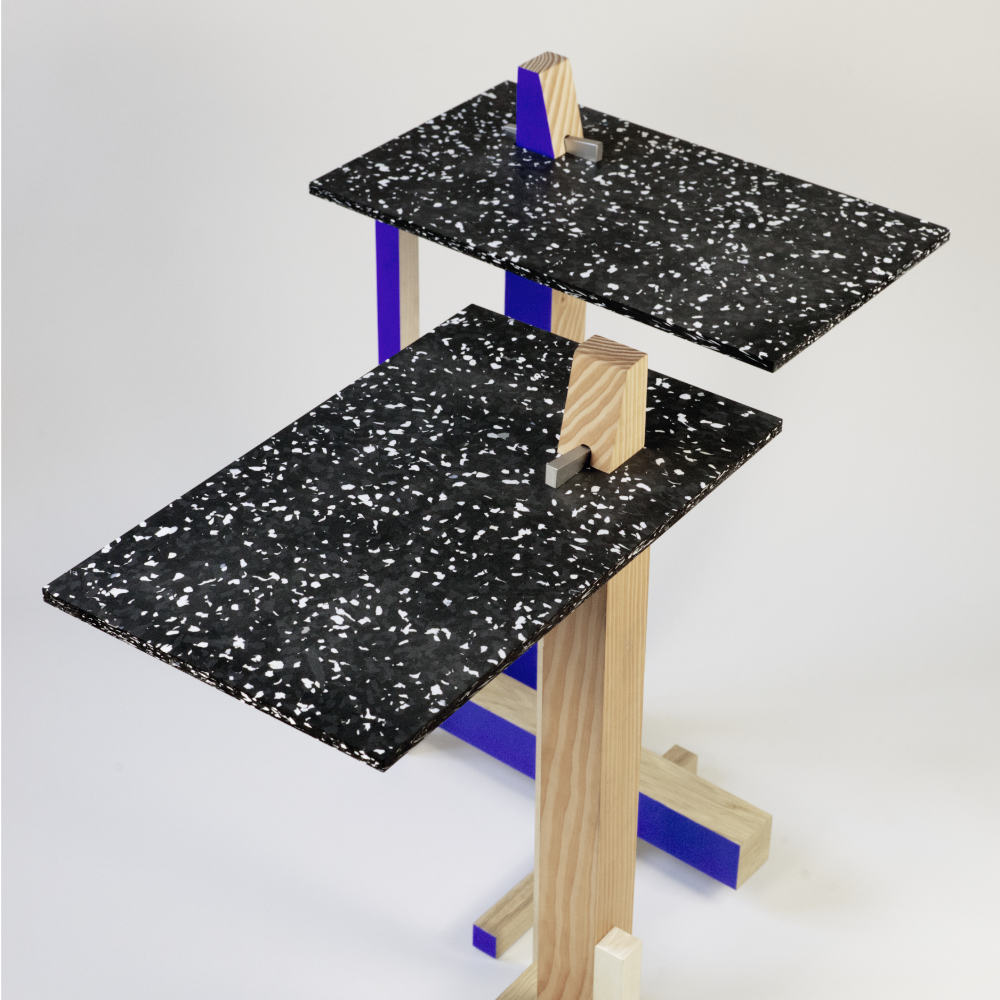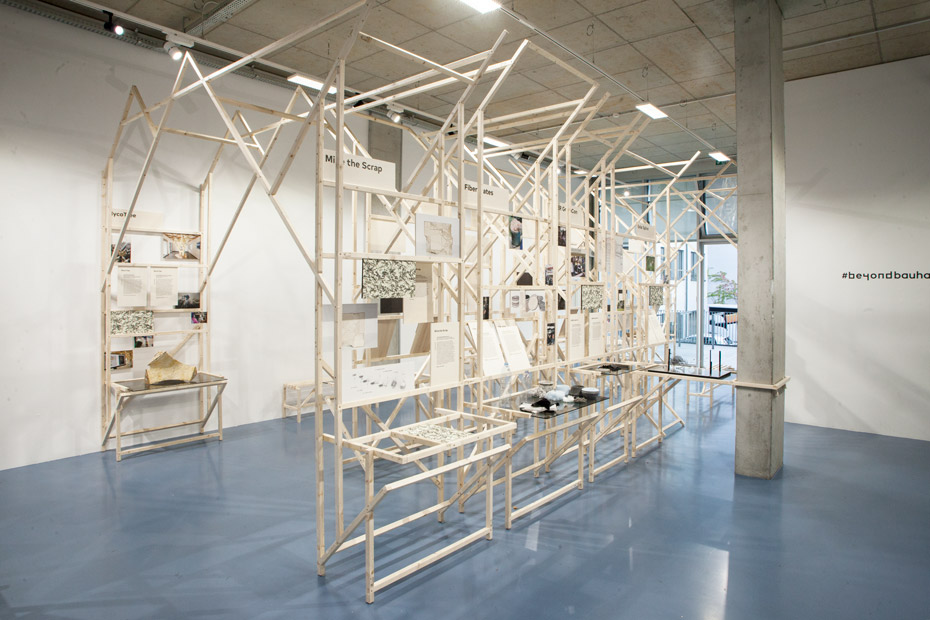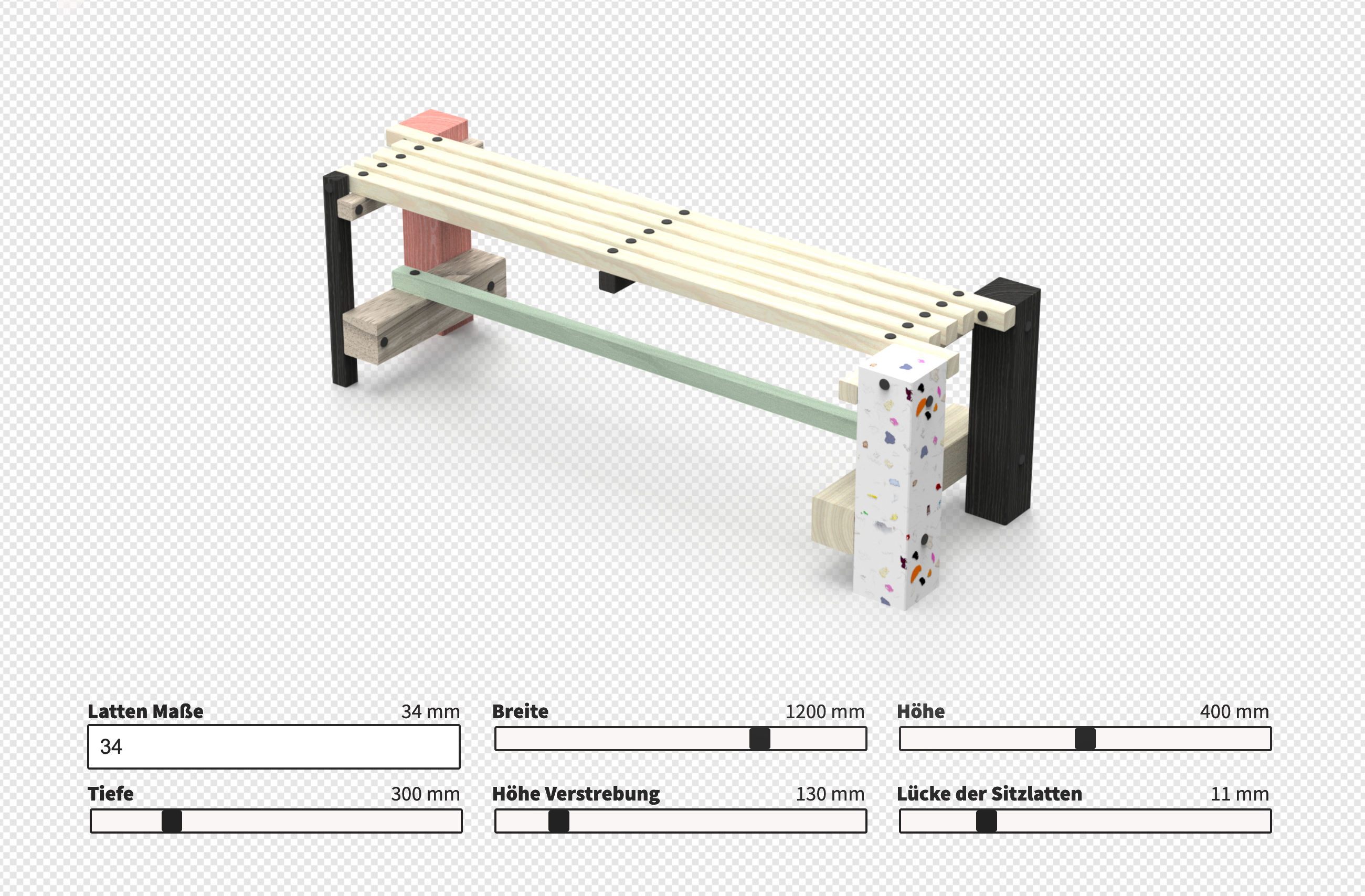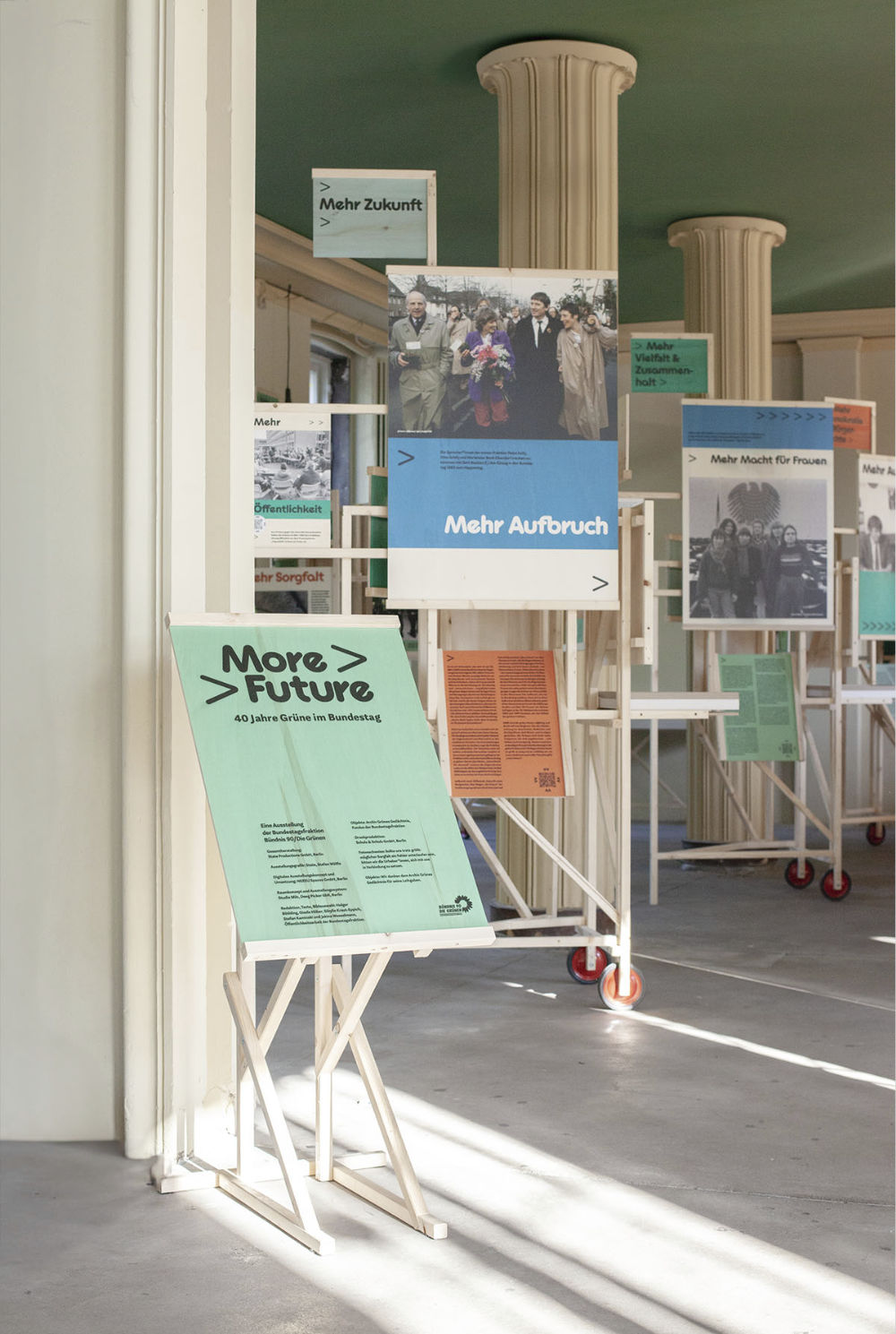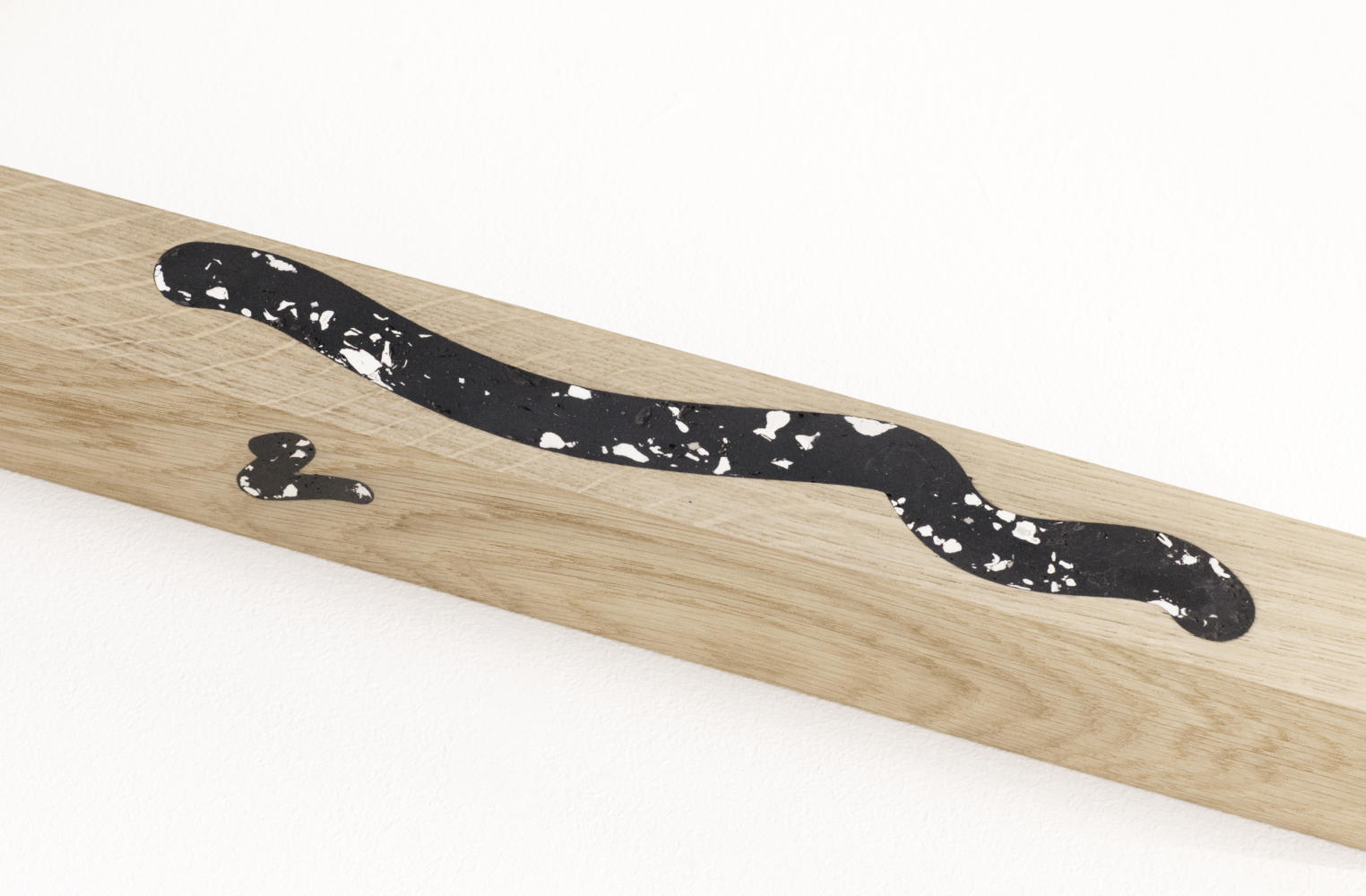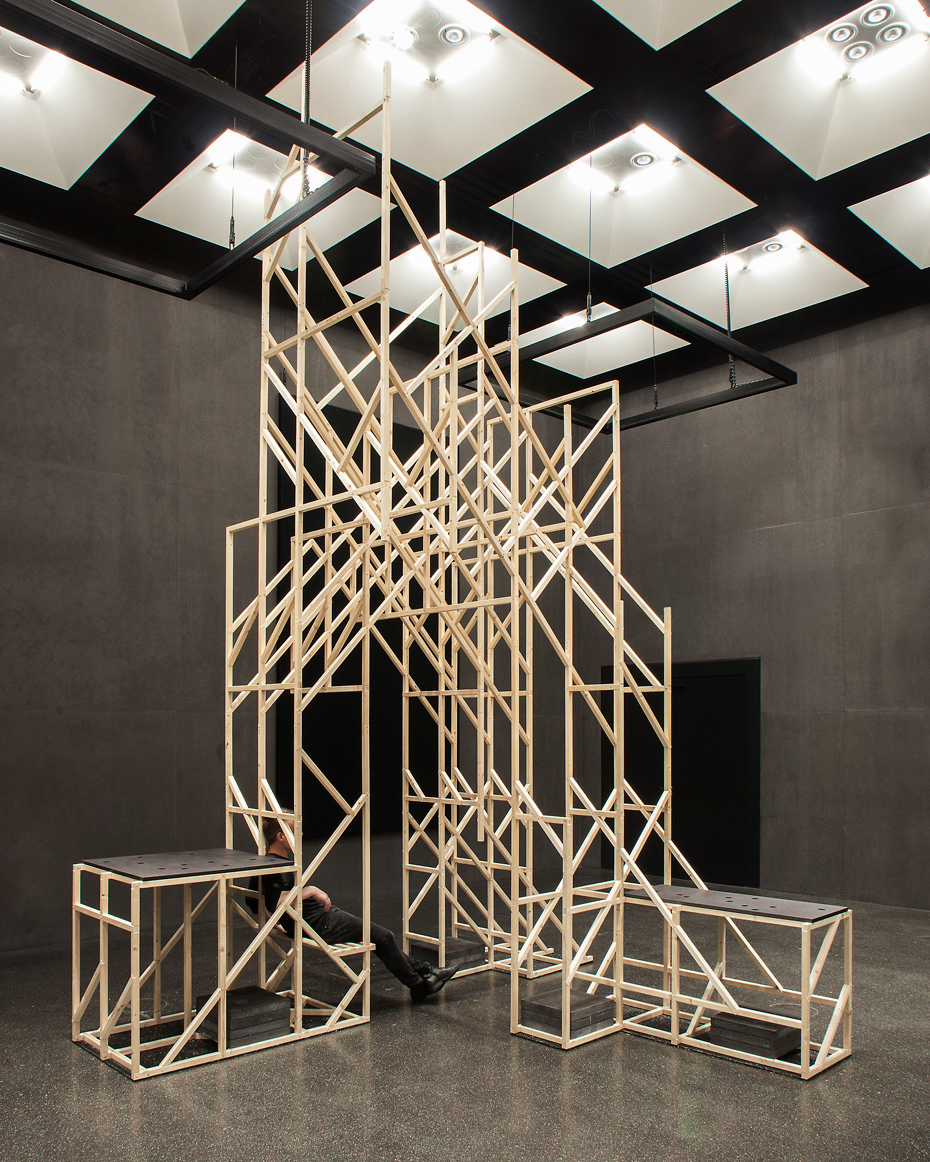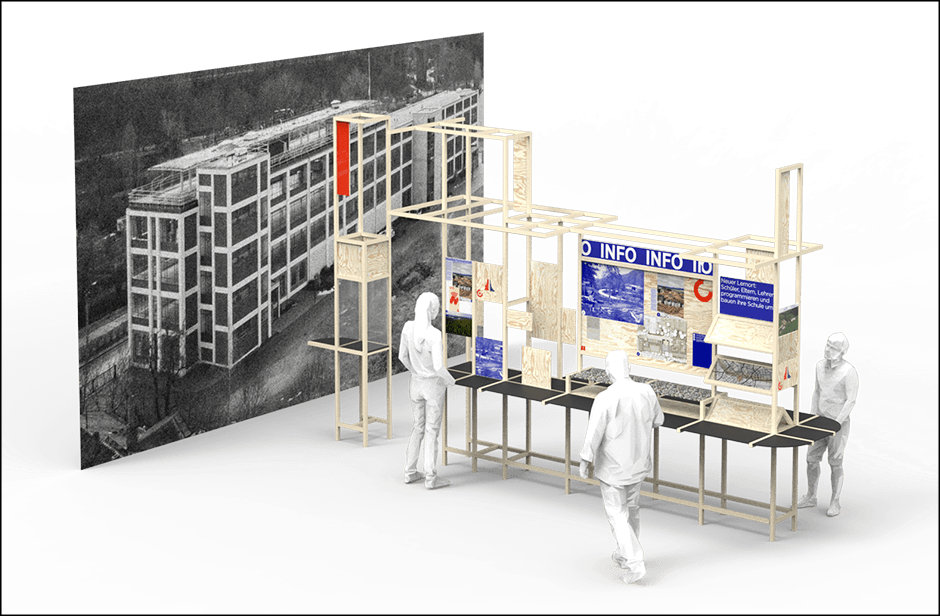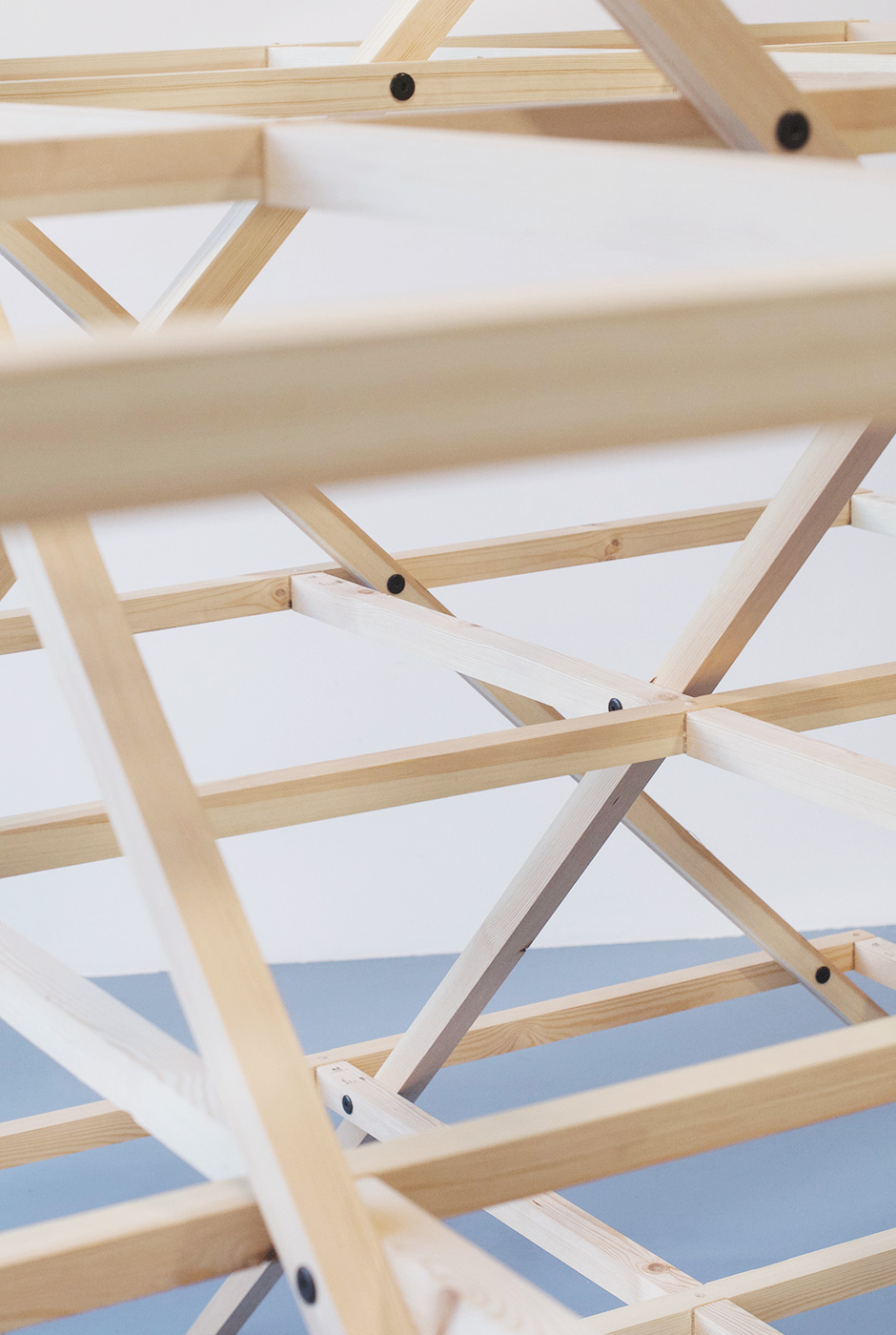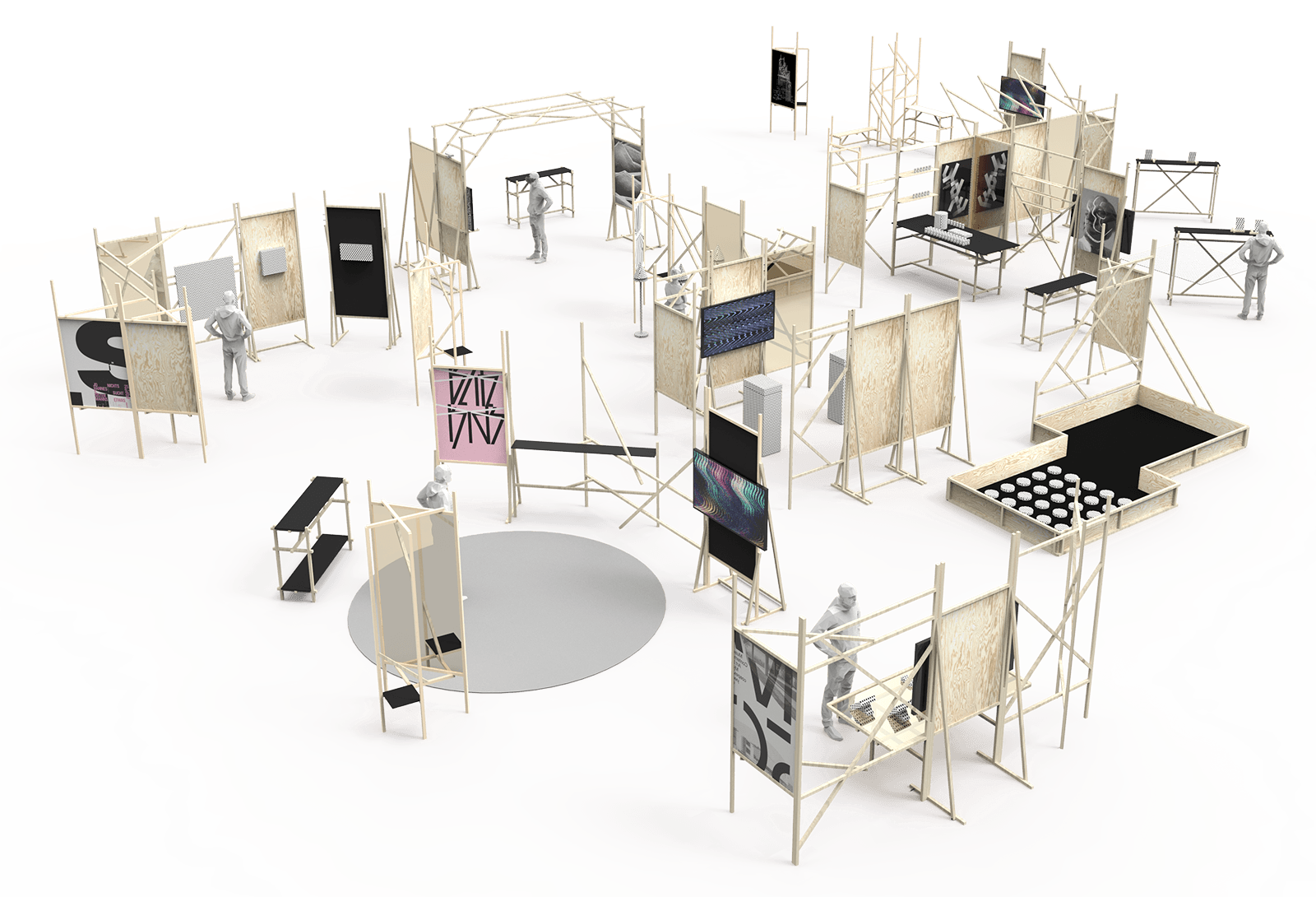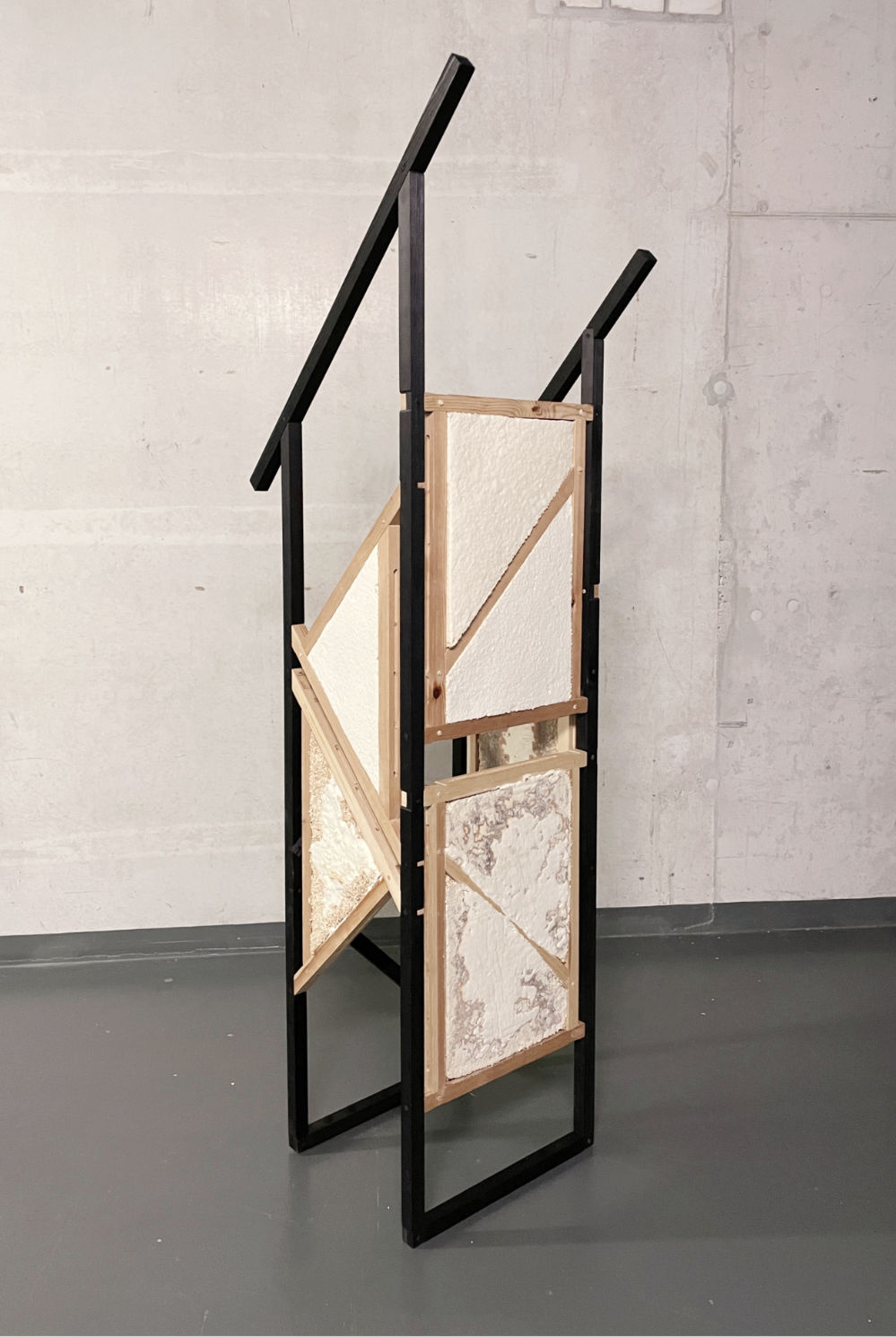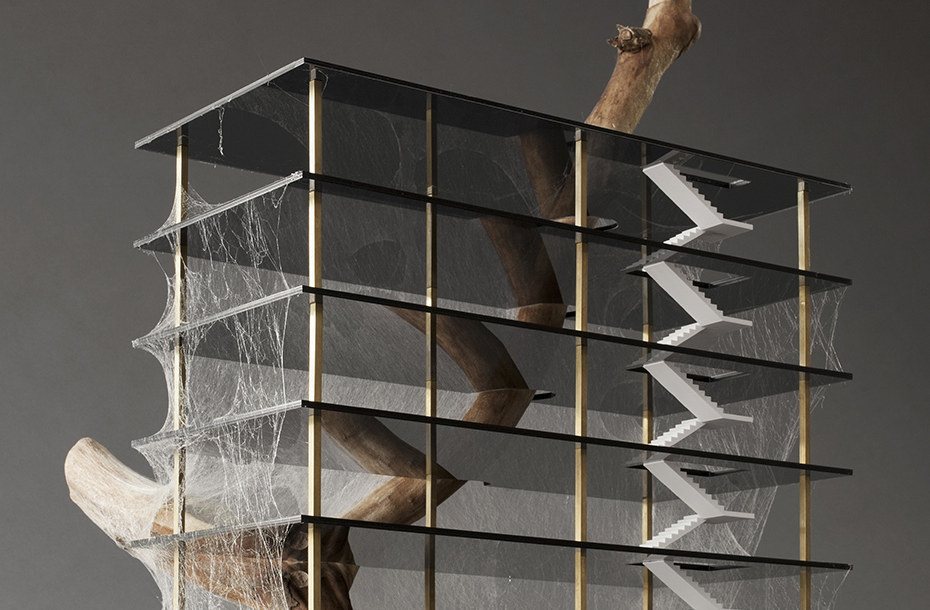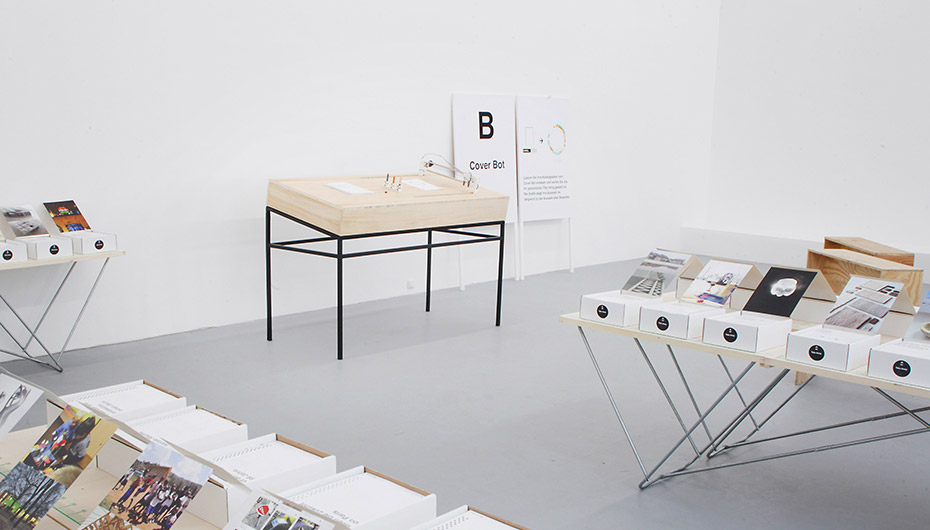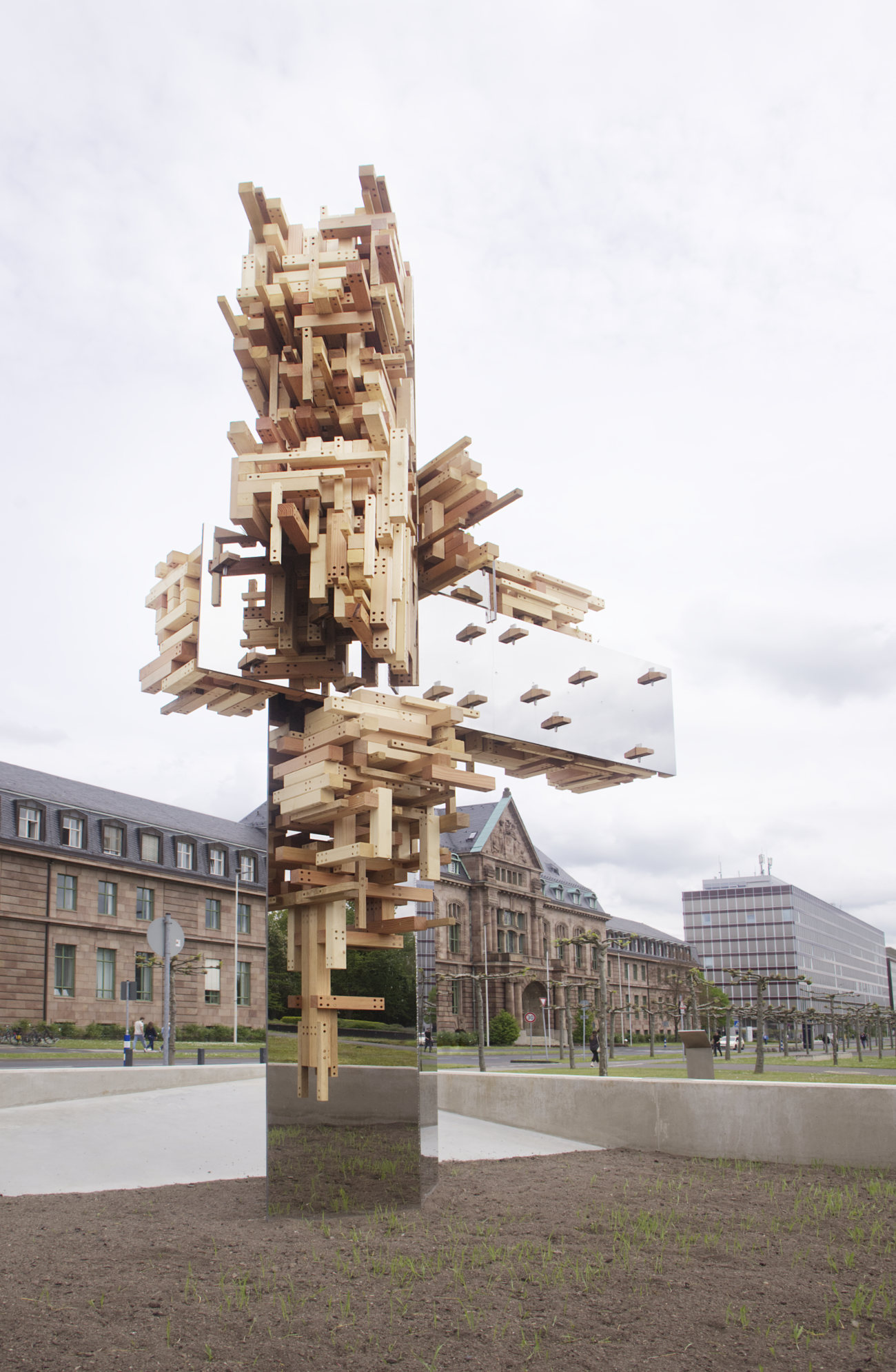
Place of remembrance - Bayer AG
In memory of the victims of forced labor at I.G. Farben, studio milz and ART+COM created a memorial site for Bayer AG. The sculpture, standing at five meters tall, serves as an artistic symbol of historical data from the Bayer company archive that documents the fates of approximately 16,000 victims. The entire design and shape is formally based on this data set.
Polished stainless steel sheets meet structures made of untreated wood, all integrated with living plants and mycelium. The resulting organic sculpture is intentionally designed to be transformed by the forces of nature, and exposed to unplanned interactions such as change and growth over time, while the steel sheets will endure eternally.
Instead of a static monument, the sculpture is an organic structure that continuously invites reflection on the company's history during the Nazi era.
In cooperation with: art+com, project lead
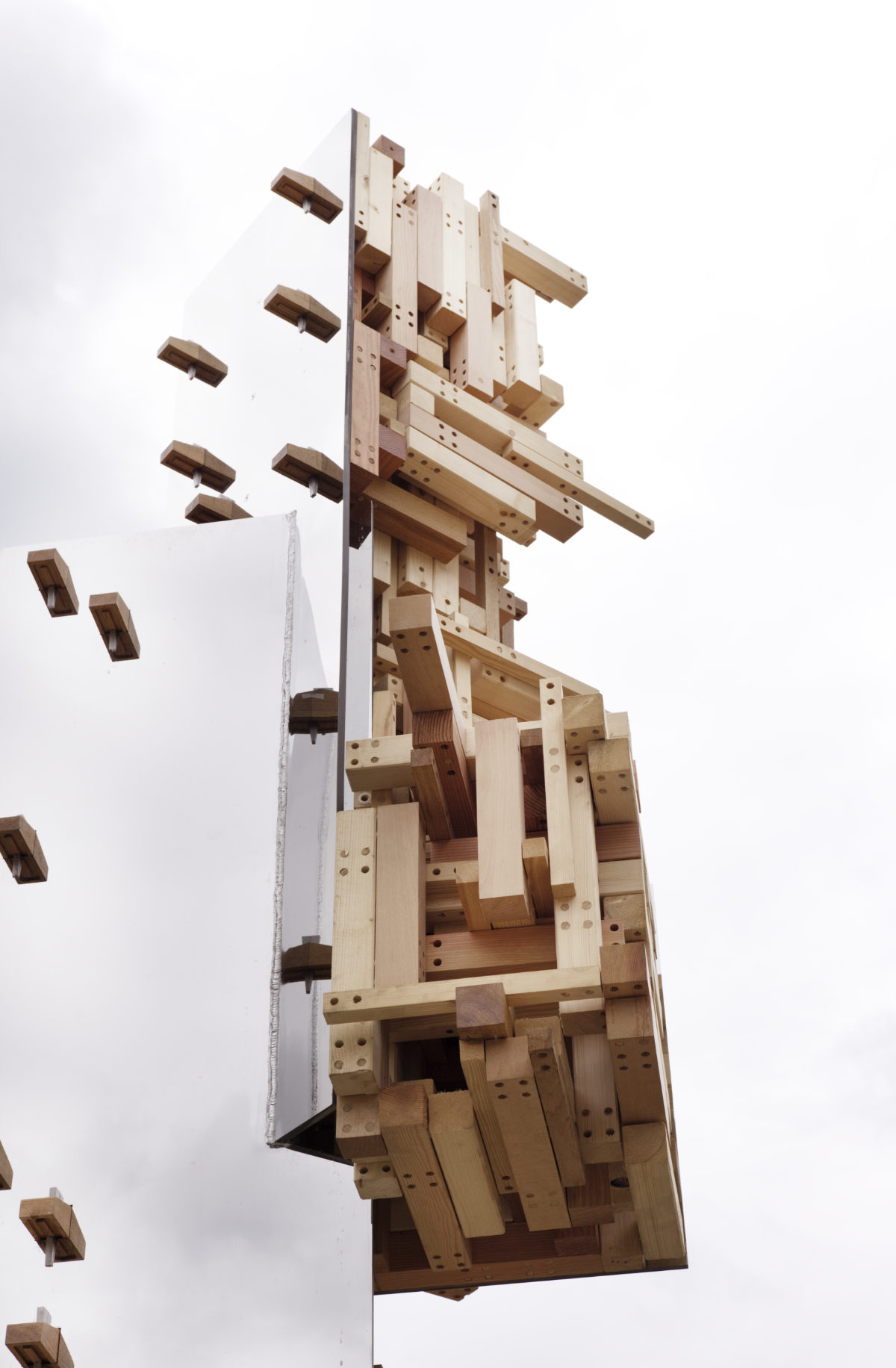
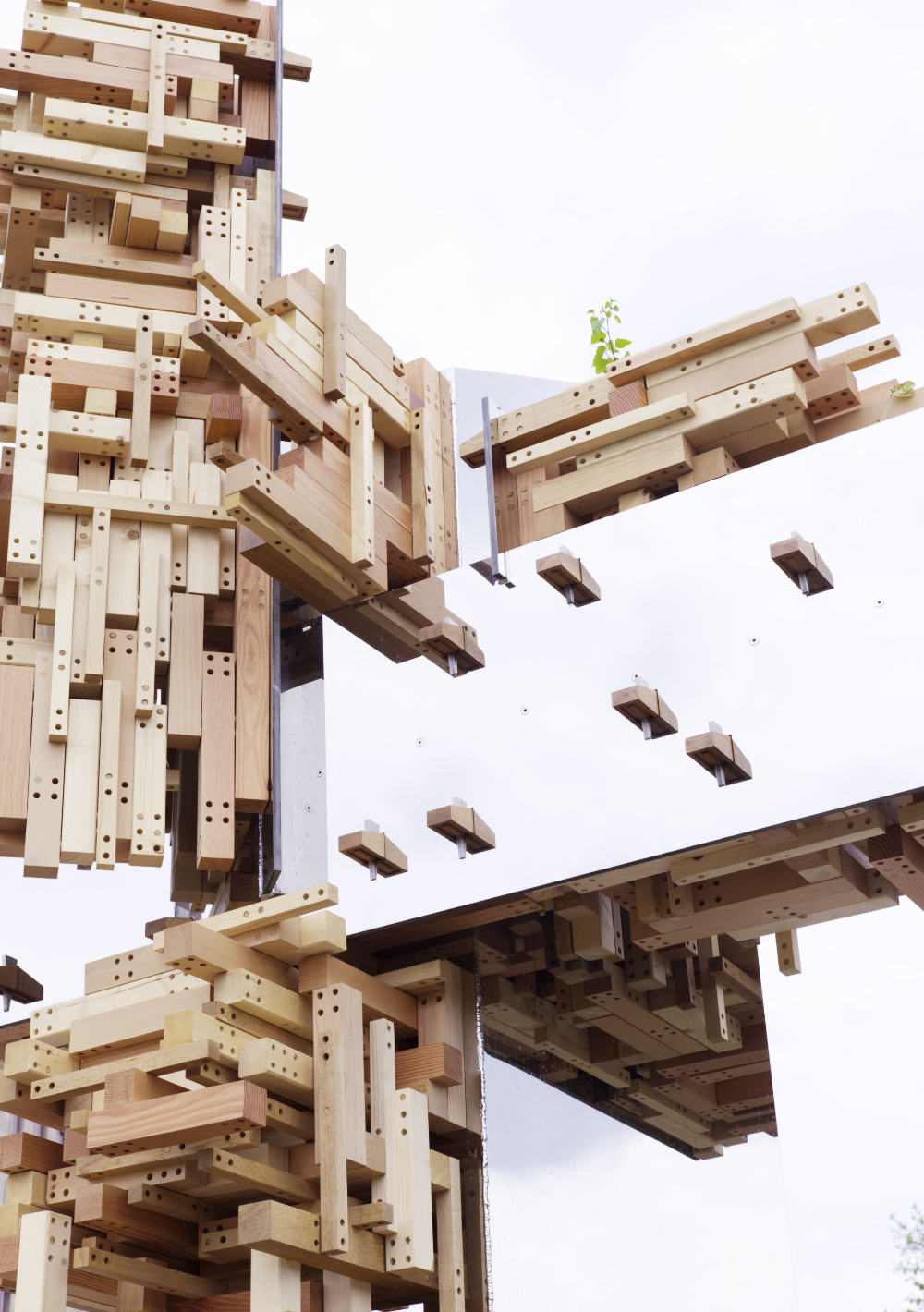
Six national tree types
The polished steel structure serves as a reflective element, mirroring both the people on site and the architecture from three different eras of BAYER AG. Based on the data from the Bayer archive it was shaped in dimension and orientation towards the former factory locations.
The wooden structure is algorithmically composed of seven different types of wood, which form a structural timeline in terms of decay. Around 2000 parts made of birch, oak, douglas fir, spruce, beech, and pine are arranged in a complex and overwhelming manner, forming a single sculpture that appears dramatically different depending on the point of view and time.
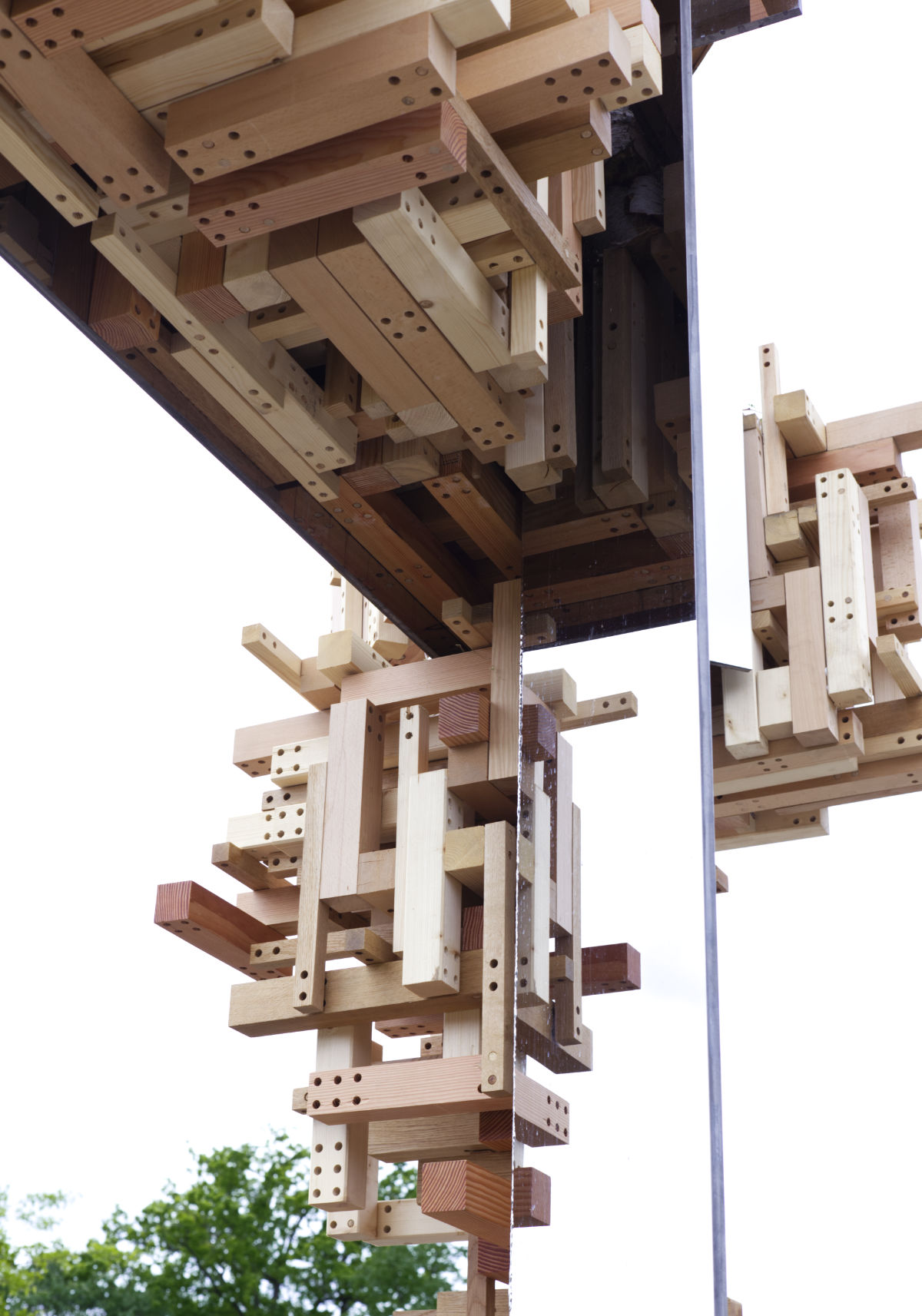
digital deciphering by ART+COM
The process of change is recorded by a time-lapse camera and made accessible through a companion web app that deciphers not only the documentation but also the formative data from the archive and their meanings.
for more details: art+com
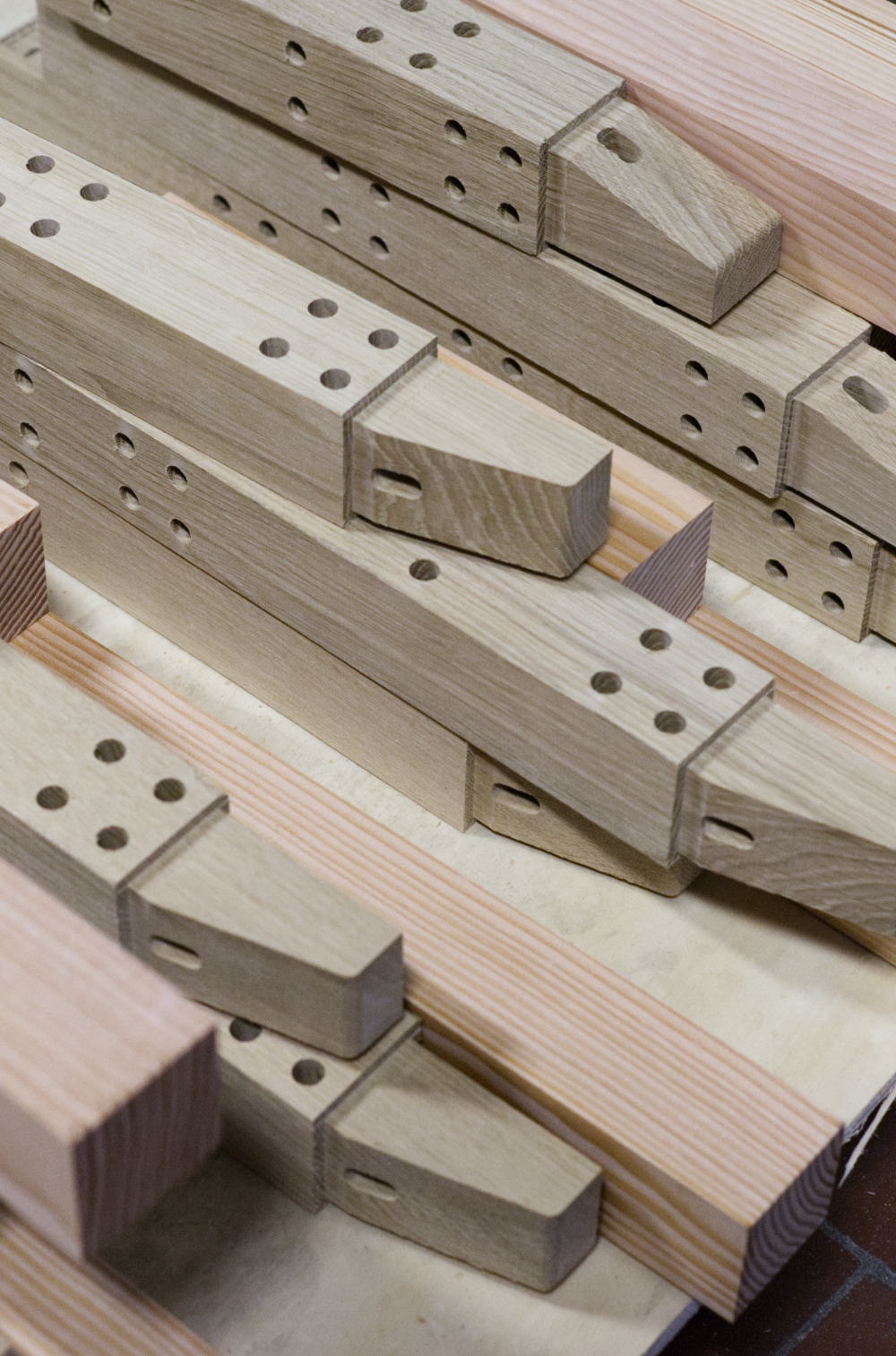
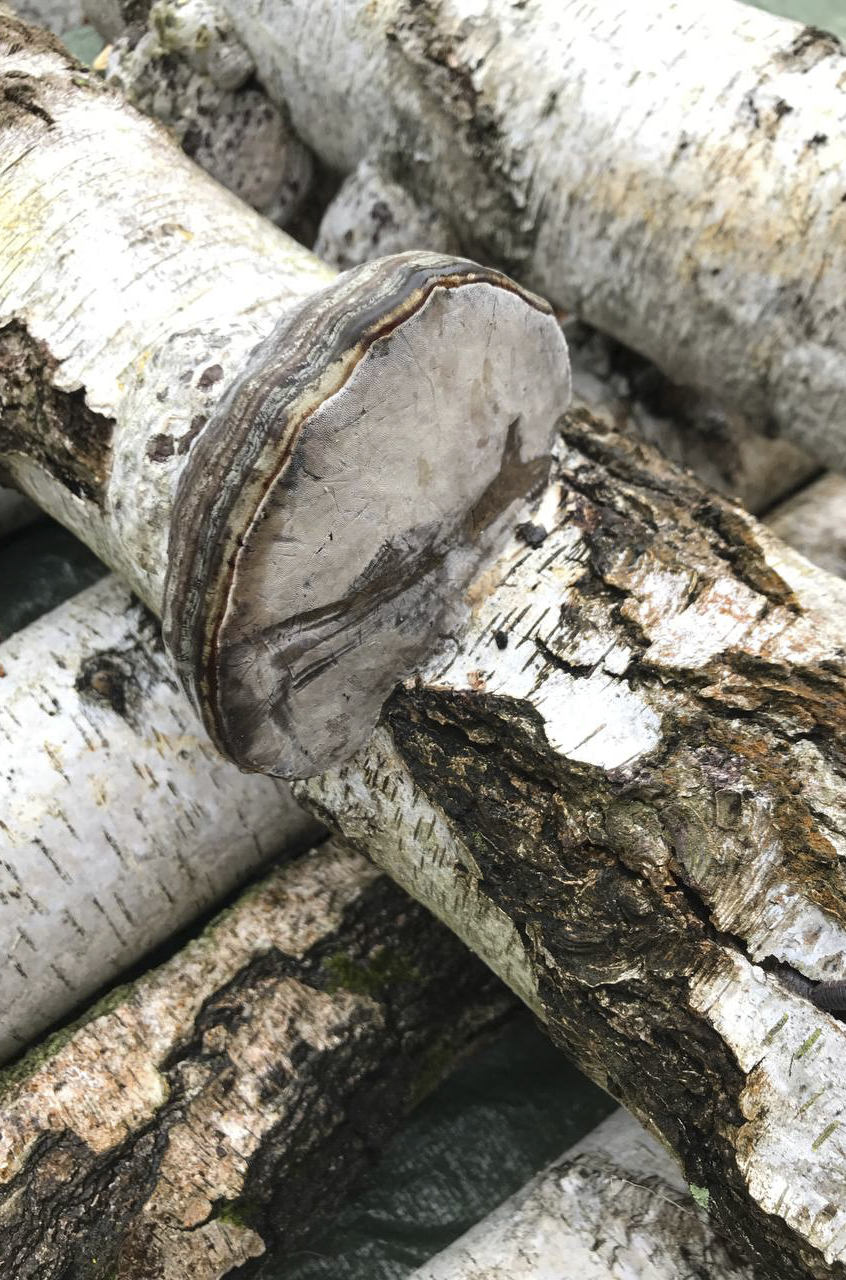
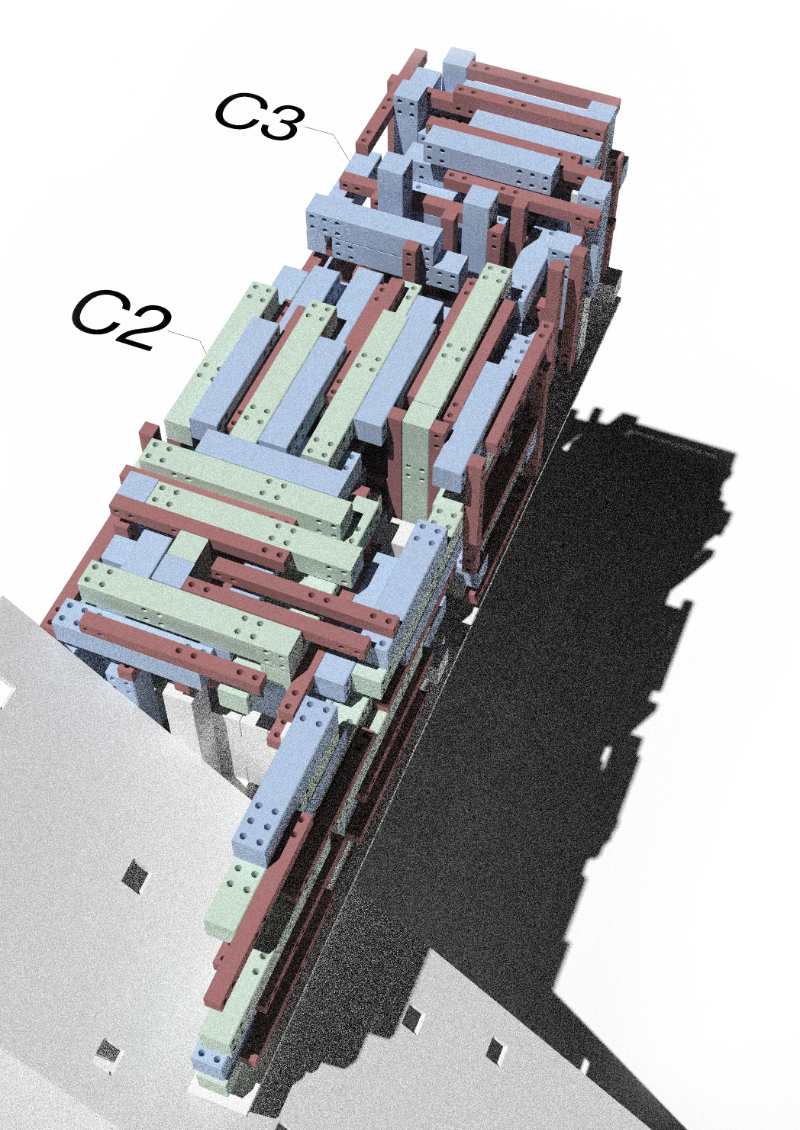
Parametric Design Approach
In addition to conceptualizing, designing, and manufacturing, studio milz developed custom software to generate the components and wood clusters parametrically. The constructions were produced using the JOYN SYSTEM.
